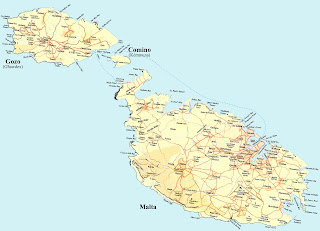Montenegro: "Black Mountain, Black Lake, Black Forest"
Montenegro,is a sovereign state in Southeastern Europe. It has a coast on the Adriatic Sea to the south-west and is bordered by Croatia to the west, Bosnia and Herzegovina to the northwest, Serbia to the northeast, and Albania to the south-east. Its capital and largest city is Podgorica, while Cetinje is designated as the Prijestonica, meaning the former Royal Capital City.
In the 9th century, there were three principalities on the territory of Montenegro: Duklja, roughly corresponding to the southern half, Travunia, the west, and Rascia, the north. In 1042, archon Stefan Vojislav led a revolt that resulted in the independence of Duklja and the establishment of the Vojislavljević dynasty. Duklja reached its zenith under Vojislav's son, Mihailo (1046–81), and his grandson Bodin (1081–1101). By the 13th century, Zeta had replaced Duklja when referring to the realm. In the late 14th century, southern Montenegro (Zeta) came under the rule of the Balšić noble family, then the Crnojević noble family, and by the 15th century, Zeta was more often referred to as Crna Gora (Venetian: monte negro).
Large portions fell under the control of the Ottoman Empire from 1496 to 1878. Parts were controlled by Venice. From 1515 until 1851 the prince-bishops (vladikas) of Cetinje were the rulers. The House of Petrović-Njegoš ruled until 1918. From 1918, it was a part of Yugoslavia. On the basis of an independence referendum held on 21 May 2006, Montenegro declared independence on 3 June of that year. The currency is Euro (€) (EUR).
Some interesting facts are:
1. The country of Montenegro does not require tourists to hold tourist visas. However, it is a must for people who work in the country to hold and renew their work visas.
2. Skadar/Scadar/Scutari Lake is located in the so called Zeta-Skadar valley, with the size of 391km2, it is the larges lake on the Balkan Peninsula.
3. Crvena Stijena by the village Petrovici near Niksic is one of the oldest cultural and historical monuments and also one of the most important archeological sites in Europe. The cave is unique in the world because of numerous cultural horizons it contains.
4. Perast is one of the most beautiful little places in Boka Bay. Perast is a wonderful old town, with wonderful old architecture.
5. Mountain of Lovcen rises above the coastal region and is the backdrop of the city of Kotor. This mountainous region plays an important role in the consciousness of Montenegrin people. Lovcen is a symbol of state and national identity.
6. Pelicans and flamingos have been visiting Montenegro long before any tourists started flying in.
7. At 1300 metres deep, the Grand Canyon of Tara River is actually the deepest canyon in Europe and second largest in the world after the Colorado canyon in the USA. Not just a humbling sight, but also a highly recommended for white knuckle rafting.
For more facts visit:
http://www.lonelyplanet.com/montenegro
http://ukf.com/words/10-cool-facts-about-montenegro-home-of-sea-dance-festival/11113
Some beautiful places are:
For tourism details visit: +See Montenegro +Visit Montenegro +Montenegro Travel
http://www.visit-montenegro.com/
http://www.montenegro.com/
The Untold Stories:
http://khanshahebaz.blogspot.com/
http://theuntoldnarrations.blogspot.in/
Find Me: Shahebaz Khan
Facebook: https://www.facebook.com/shahebazk
Twitter: https://twitter.com/shahebaz001
Instagram: https://instagram.com/shahebaz001/ #shahebaz
In the 9th century, there were three principalities on the territory of Montenegro: Duklja, roughly corresponding to the southern half, Travunia, the west, and Rascia, the north. In 1042, archon Stefan Vojislav led a revolt that resulted in the independence of Duklja and the establishment of the Vojislavljević dynasty. Duklja reached its zenith under Vojislav's son, Mihailo (1046–81), and his grandson Bodin (1081–1101). By the 13th century, Zeta had replaced Duklja when referring to the realm. In the late 14th century, southern Montenegro (Zeta) came under the rule of the Balšić noble family, then the Crnojević noble family, and by the 15th century, Zeta was more often referred to as Crna Gora (Venetian: monte negro).
Large portions fell under the control of the Ottoman Empire from 1496 to 1878. Parts were controlled by Venice. From 1515 until 1851 the prince-bishops (vladikas) of Cetinje were the rulers. The House of Petrović-Njegoš ruled until 1918. From 1918, it was a part of Yugoslavia. On the basis of an independence referendum held on 21 May 2006, Montenegro declared independence on 3 June of that year. The currency is Euro (€) (EUR).
Some interesting facts are:
1. The country of Montenegro does not require tourists to hold tourist visas. However, it is a must for people who work in the country to hold and renew their work visas.
2. Skadar/Scadar/Scutari Lake is located in the so called Zeta-Skadar valley, with the size of 391km2, it is the larges lake on the Balkan Peninsula.
3. Crvena Stijena by the village Petrovici near Niksic is one of the oldest cultural and historical monuments and also one of the most important archeological sites in Europe. The cave is unique in the world because of numerous cultural horizons it contains.
4. Perast is one of the most beautiful little places in Boka Bay. Perast is a wonderful old town, with wonderful old architecture.
5. Mountain of Lovcen rises above the coastal region and is the backdrop of the city of Kotor. This mountainous region plays an important role in the consciousness of Montenegrin people. Lovcen is a symbol of state and national identity.
6. Pelicans and flamingos have been visiting Montenegro long before any tourists started flying in.
7. At 1300 metres deep, the Grand Canyon of Tara River is actually the deepest canyon in Europe and second largest in the world after the Colorado canyon in the USA. Not just a humbling sight, but also a highly recommended for white knuckle rafting.
For more facts visit:
http://www.lonelyplanet.com/montenegro
http://ukf.com/words/10-cool-facts-about-montenegro-home-of-sea-dance-festival/11113
Some beautiful places are:
For tourism details visit: +See Montenegro +Visit Montenegro +Montenegro Travel
http://www.visit-montenegro.com/
http://www.montenegro.com/
The Untold Stories:
http://khanshahebaz.blogspot.com/
http://theuntoldnarrations.blogspot.in/
Find Me: Shahebaz Khan
Facebook: https://www.facebook.com/shahebazk
Twitter: https://twitter.com/shahebaz001
Instagram: https://instagram.com/shahebaz001/ #shahebaz

















Comments
Post a Comment